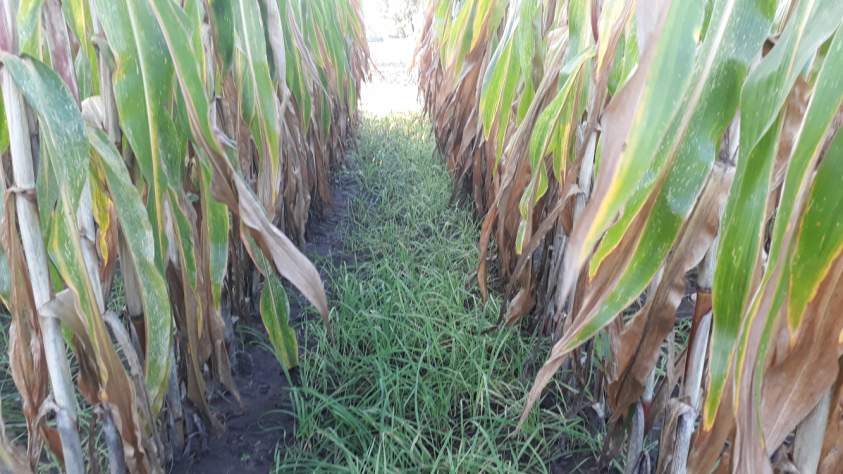Covercrops can be sown after harvesting the main crop, but more and more the technique of intercropping is being implemented.
Sowing after harvest
This is the easiest option: you place one crop after the other, so you don’t have to take 2 crops into consideration in topics like pest control or weed control and the cover crop has no influence on the yield of your main crop.
Although this gives more flexibility, certainly when it comes to later harvest of the main crop the choice in species is rather limited. Also the germination of the cover crop needs to occur in worse weather conditions, which does not always lead to a successful growth of the cover crop.
Find out more about the choice of species here.
Intercropping
Intercropping means that the cover crop and main crop are together on the field. We give an example for maize, which is becoming more and more a common practice in the Netherlands and Belgium.
The cover crop can be sown in different stages of the maize growth: together with the maize, 4-5-leaf stage or 8-10-leaf stage. Advantage is that the cover crop can germinate in better weather conditions, which results in more carbon sequestration and therefore a higher soil carbon content. This better development also leads to a higher nitrate uptake and so less leaching of elements.
Soil cultivation leads to nitrogen mineralisation. When this occurs when there is no crop (or very small crop) at the field, like it does when the cover crop is sown after harvest of the main crop, the nitrogen is leaching. The fact that no field management is needed after harvest of the main crop, means that no extra mineralisation takes place. Main rule: the earlier you sow the cover crop, the less nitrogen leaches, but the higher the competition between cover crop and maize.

Picture: Undersawing in 4th leaf stage of English ryegrass and orchard grass (Trial of Hooibeekhoeve BE, 2019)
To come to a well developed cover crop, we give you some guidelines:
-
Species: When sowing in the early stages, use slow developing species like tall fescue (Festuca arundinacea) in an amount of 15 kg/ha to avoid competition between the grass and the maize. In the later stages perennial ryegrass (Lolium perenne - 15 kg/ha, 4-5-leaf-stage) or Italian rye-grass (Festuca perennis - 15-20 kg/ha, 8-10-leaf-stage) can be used. These species can germinate and grow in the shadow of the maize and maize doesn’t suffer from the competition anymore at this stage.
-
Sowing technique: avoid seed from the cover crop in the maize row. Certainly when sawing in the early stages a row of 25 cm without cover crop seeds is needed for the maize seeds/plants to avoid competition. The use of GPS makes this easier.
-
Weed control: Parcels with a high weed pressure (grassy weeds) are not suited for this technique! Of course herbicides with grass activity can’t be used, certainly not when sowing early. For the later stages avoid soil herbicides. These can have an aftereffect which can influence the germination of the cover crop. Sowing in later stages can be combined with mechanical weed control. This soil cultivation not only reduces the weeds, but also gives an extra nitrogen mineralisation which can have a positive effect on the maize growth.
Termination of cover crops
Termination of perennial cover crops traditionally occurs with the use of glyphosate. Last years more and more ways of mechanical destruction of the cover crops are studied. Extra attention is needed for this. Keep in mind that with thick crops ploughing or planting can be harder due to residues and mulching effects which reduce germination. In thick crops not all of the plants are terminated by the treatments and so can regrow.
More information on the destruction of perennial cover crops can be found here: Field Lab of Innovative Farmers (English)
Take care the cover crops don’t produce seeds. This might give a weed problem in the main crop.
The destruction of the cover crops also asks for special machinery. More information on this can be found here: